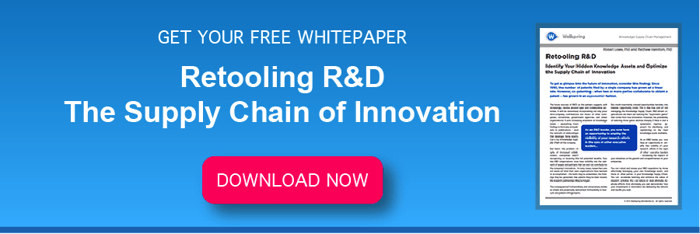5 Tips for Successful Industrial Research Partnerships
Research partnerships between companies, universities, research institutes, and hospitals are becoming more productive and more prevalent across a wide range of industry verticals. In fact, according to the Industrial Research Institute 2015 survey, 47% of polled research leaders expect to increase the amount of outside research they will participate in this year. With that type of growth it is important to ensure that your team is getting the most out of each and every partnership program. Here are five tips to help you along the way!
1 Set Expectations Early
Before you consider an outside partnership with a company, university, research institute, or hospital, it is important to define what you expect to achieve and exactly how much information you plan to share with your new partner. We recommend that you set up a standard document that includes information about what types of information you plan on exchanging, how you plan on sharing that information, and who will require access to this shared data. We also recommend defining the strategic aims of your organization and mapping out what the final exit strategy will look like once this partnership has concluded. All of this information should be documented and stored in a secure and centralized system to ensure easy access for relevant parties.
2 Use Your Network
Leveraging your network is key to finding the right research organization for you. To ensure that you are reaching out to the best possible candidates, you need to create a repository for all the contacts that could be a potential fit for your strategic goals. We recommend a system that integrates organization data, expertise information, contact information, and other features such as contracts so that you can seamlessly integrate NDAs and CDAs without having to switch between various systems. You should also look to online invention and intellectual property marketplaces as a resource to expand your network of experts.
3 Get Control of Your Budget
One of the largest barriers to a successful research partnership is budget complexity. Multiple organizations dealing with multiple line items with no central system for tracking it all can create a budget disaster. We recommend a system with centralized budget tracking capacities and robust financial support. Your research team needs to assign costs, track critical dates, monitor progress, and easily report on the status of your budget as it relates to various project stage gates. Don’t let your project be bogged down by numerous spreadsheets, e-mails, and document-sharing systems.
4 Set Up An IP Framework
IP is the lifeblood of modern industry, and as such, any intellectual property developed during a joint research program needs to be carefully managed. We recommend a system for tracking and organizing a large quantity of data. This is especially important if personnel from multiple countries contribute to inventions or if your staff participates in real-time development of patent applications. Timely and accurate information enables you to build an IP portfolio that serves as a competitive advantage. At a minimum, your system needs to include automated date reminders, clear docket schedules, and robust reporting capabilities.
5 Standardize Your Process
The most difficult part of external partnerships isn’t executing the project; it’s replicating your successes again and again. As the IRI survey highlights, external research partnerships are here to stay, and you cannot afford to manage these critical business activities in an ad hoc or unorganized way. We recommend investing in a broader research strategy by implementing a centralized system for finding and managing opportunities, expertise, and deals. For more information contact Wellspring.

